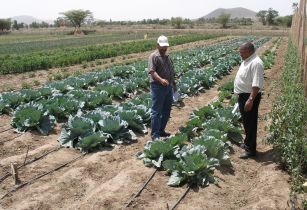Micro Irrigation was designed and developed to secure and sustain crop growth in arid and semi-arid environments and greenhouses where water is always at a premium
Micro-irrigation requires substantial initial investment and also a long learning curve which makes the system particularly appropriate for high value horticultural crops including fruit, vegetables, cut flowers and ornamentals.
Installation of micro irrigation brings many advantages for farmers and growers but some disadvantages too.
Advantages and disadvantages
Micro-irrigation will generally use less than half the volume of water required by the more traditional ‘watering’ systems such as sprinkler irrigation. Lower pressures used mean less energy for pumping while precise placement of more exact water volumes enhances and improves water management.
Economically damaging crop diseases are invariably less frequent because the crop canopy stays dry and humidity remains at a lower level. The potential for high degrees of
automation means micro-irrigation offers real opportunities for much lower operating and labour costs.
Application is highly targeted with none landing between the plant rows or on to other non-productive areas. Field operations can continue while microirrigation is underway because inter-row areas stay dry. Weed growth is minimal while soluble nutrients and some pesticides can be delivered through the microirrigation
system by fertigation and chemigation. Micro-irrigation installations are suitable for ground terrain and soil conditions with other irrigation systems cannot cope with while the potential for soil erosion and nutrient leaching is minimal.
The rest of this article can be found on page 26 in the latest issue of African Farming and Food Processing:http://www.africanfarming.net/current-issue









